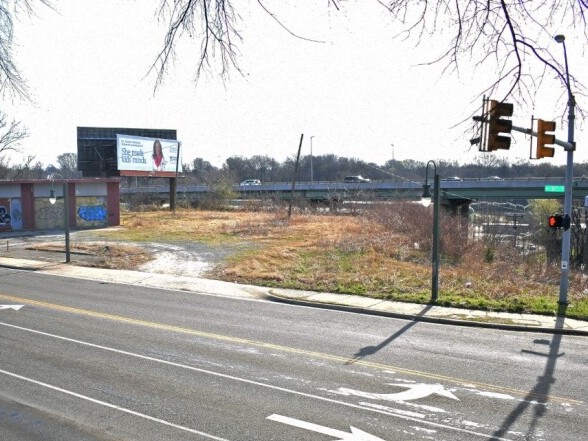Listing a Threatened Burial Ground on the National Register of Historic Places
April 29, 2022

It is difficult to get any property listed on the National Register of Historic Places, the federal government’s list of sites and districts deemed worthy of preservation. But it is especially difficult to get a site listed that has suffered more than a century of dismissal and destruction, as with Richmond’s Shockoe Hill African Burying Ground. Located near the intersection of Fifth and Hospital Streets at what was once the city’s edge, this ground served as the primary site for African American burials in the city from its opening in 1816 until its closure in 1879, ultimately growing from a two-acre parcel to upwards of thirty acres. Its longevity and size placed it among the largest such burial grounds for the enslaved in the nation.
Yet after its closure, its records were lost, and the city repurposed the site for street and railway developments before finally selling its core to the Sun Oil Company for construction of an automobile station. Unfortunately, this kind of targeted desecration was not unusual in the twentieth century, as hundreds of comparable Black burial grounds across the nation suffered similar fates.
But the site got some good news in March 2022, when it was approved for listing on the Virginia Landmarks Registry and then forwarded to the National Park Service for consideration on the National Register. For the past two years, I have had the privilege of working with archaeologists Dan Mouer and Steve Thompson, as well as with Lenora McQueen, a descendant and tireless advocate for the burying ground, as coauthors on a team drafting this National Register nomination for the site. For the nomination, we bundled the burying ground as a contributing property into the Shockoe Hill Burying Ground Historic District, consisting also of the nearby Almshouse, Hebrew Cemetery, and the Shockoe Hill Cemetery, all three of which had already received recognition on the National Register as independent properties.
Our nomination for the historic district argued that “While there is much to admire and enjoy in the well designed and purposefully curated visible properties of the District, historical significance now resides equally in the partial destruction, often deliberate, of a highly meaningful, emotionally charged, and racially fraught landscape. This nomination seeks both to recognize its full extent and to expose the great disparities that have characterized efforts at preservation and historical valorization across this public place.” In other words, we cannot understand one of these sites without understanding the fate of the others.
In March, I attended the quarterly meeting of the state architectural review board and the board of the Virginia Department of Historic Resources, where our nomination was under review. It was gratifying to receive the unanimous endorsement of both boards for our nomination. Indeed, the DHR’s board chair, Tucker Lemon, declared that our 77-page nomination was among the finest the board had ever received. It had felt like an uphill battle until then, so readers can imagine our joy and relief.
As we await the determination of the National Register for our proposed district at the federal level, the Shockoe Hill African Burying Ground still requires our vigilance. An interstate widening project and a federal high-speed rail project both threaten to make additional intrusions upon this beleaguered site. Even so, we will celebrate the unveiling of a state historical marker there in June, and we continue to hope that our continued advocacy for the site will help turn the tide. We are grateful to our current students and History Department alumni who have helped with research and advocacy to get us to this point. It has been a broad-based effort to bring this difficult past to light.
Additional news and information:
Shockoe Hill African Burying Ground nomination
A moment to celebrate for Shockoe Hill, Richmond Cemeteries Blog, Ryan Smith, March 17, 2022